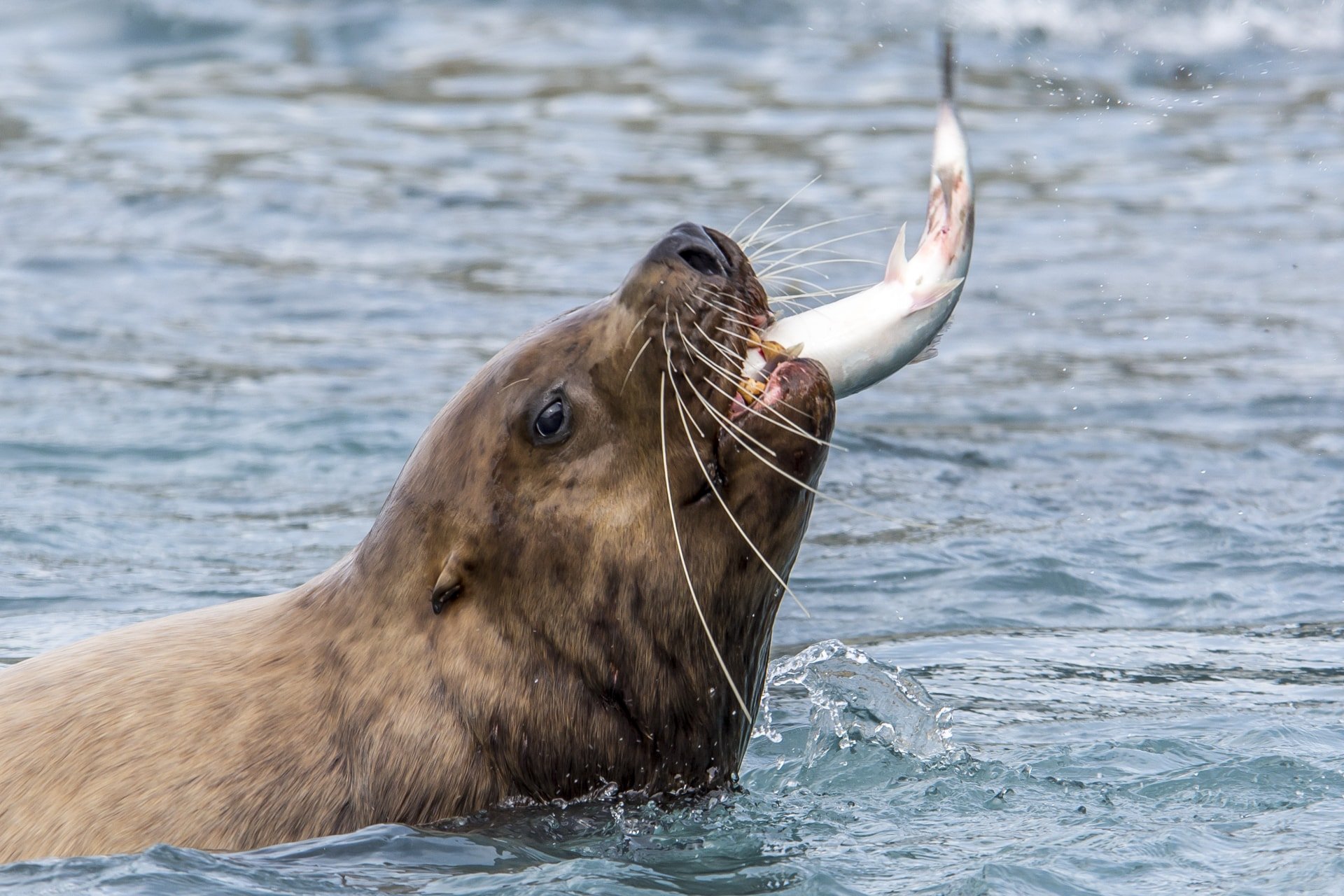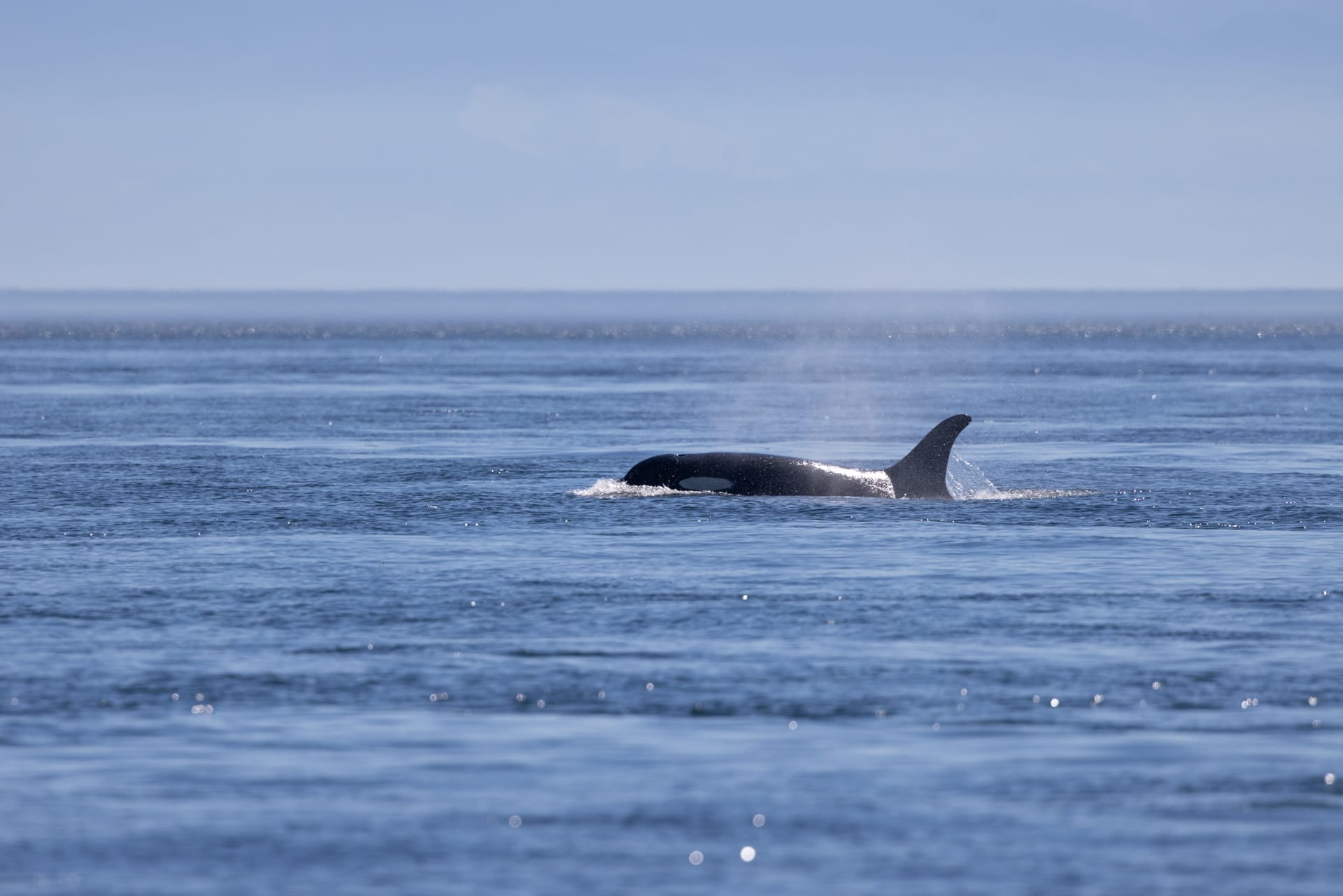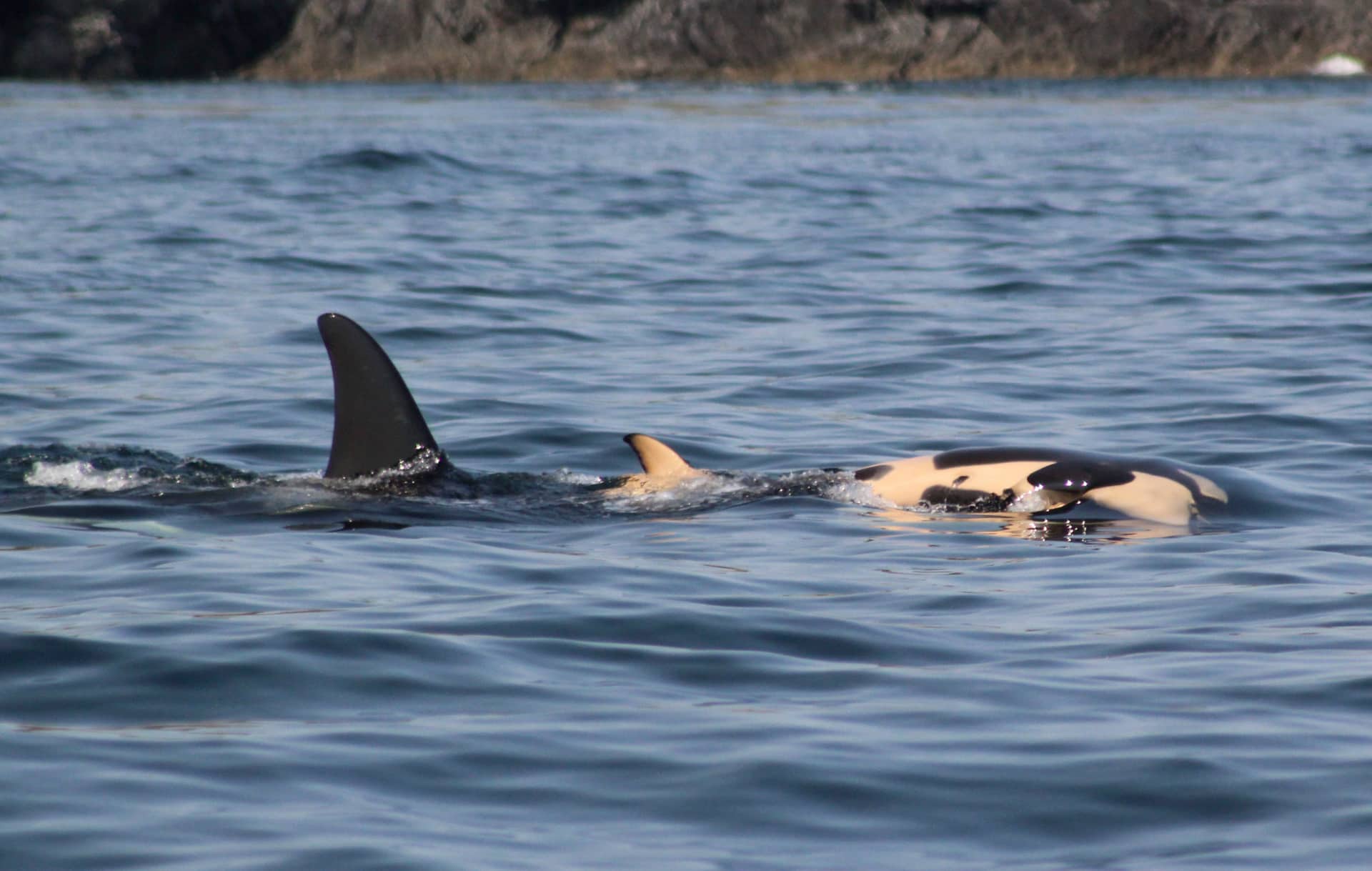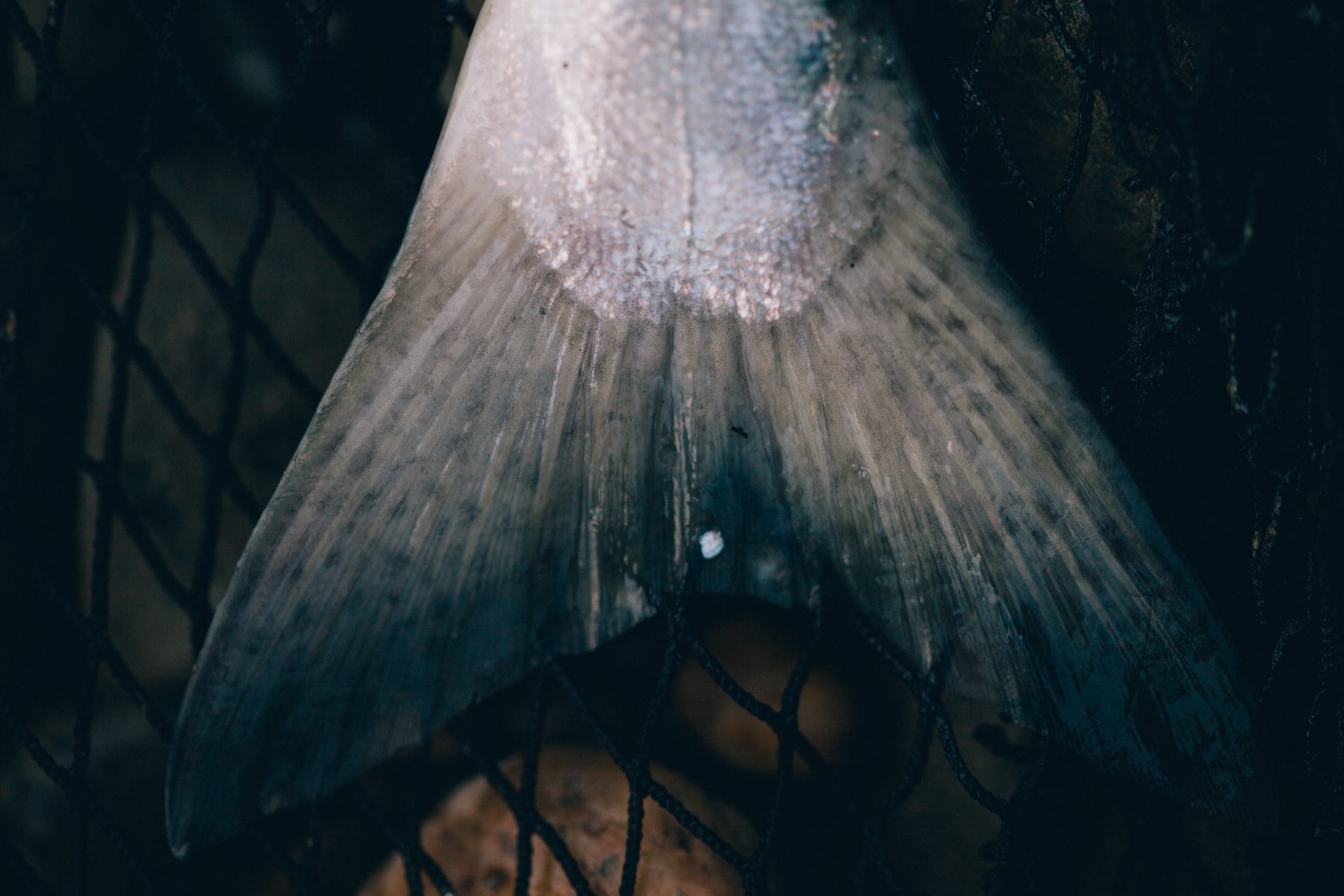
A recently published paper concludes that fish-eating orcas of the Pacific Northwest are the likely factor in a recent reduction in the body size of Chinook salmon. The authors suggest that as orca populations have (mostly) increased since the 1970s, these orcas, by targeting the largest individuals, have driven this decrease.
The authors note that although fisheries could also result in such an impact, they discount this, stating that current levels of salmon fishing in the Pacific Northwest are much lower than in previous decades.
While the authors make reference to possible impacts of hatchery production and climate change, they appear to suggest that neither of these are a contributing factor. Thus leading them to conclude that “recovery” of the salmon-specialist killer whale is contributing to the diminished size of a much valued and highly prized fisheries species, Chinook salmon.
While it’s true that orcas that specialize in salmon target the largest fish, this has been their feeding strategy for thousands of years, and if they were responsible for initiating changes in the size and reproductive success of their prey, then their population would not have survived to the present day. In fact, in a well-functioning system, top predators like orcas play an invaluable role in maintaining ecosystem health and biodiversity.
Fish-eating orcas and Chinook salmon have co-evolved in the Pacific Northwest and successfully thrived until multiple human interventions in the last Century drastically altered the ecosystem through overfishing (including removal of young orcas), hatchery production, habitat destruction—deforestation, pollution, river damming—and of course climate change.
There are three feasible human-related drivers for a reduction in the size of salmon:
Overfishing
Around the world, exploitative fishing practices have decimated populations of large predators, including fishes at the top of the food chain like tuna and salmon, with 90% removed from our oceans. Fisheries select the largest individuals, and this is especially true in salmon fisheries. Selective fishing of the larger fish has multiple effects, including a reduction in size and age-at-maturity. Smaller females will produce fewer eggs, as body size and fecundity (the number of eggs produced by a female) are directly linked, and so the cycle continues. Declining fish size in overfished species has been seen and documented in fisheries around the world.
Hatcheries
As populations of wild salmon started to decline, a government-funded program for establishing hatcheries was set up. Billions of hatchery-raised salmon have been released into a wild ecosystem, such that the number of salmon in the Pacific Northwest ecosystem is at an all-time high. But despite this, catch rates continue to decline. Some scientists believe, not surprisingly, that the introduction of millions of additional mouths to feed is creating competition for food, resulting in smaller salmon at maturity.
Climate Change
Long-term ocean warming trends are impacting food webs throughout the Pacific and this has been linked to a decline in body size of many species. Salmon are high up on the food chain and Chinook are the largest of the Pacific salmon and therefore dependent on a whole suite of organisms, from small fish reliant on plankton, to crabs, and then to large fishes as they mature. Climate-driven changes to the flora and fauna of the Pacific Northwest results in less or smaller prey, and a reduction in predator body size is a natural response. Eat less, grow less.
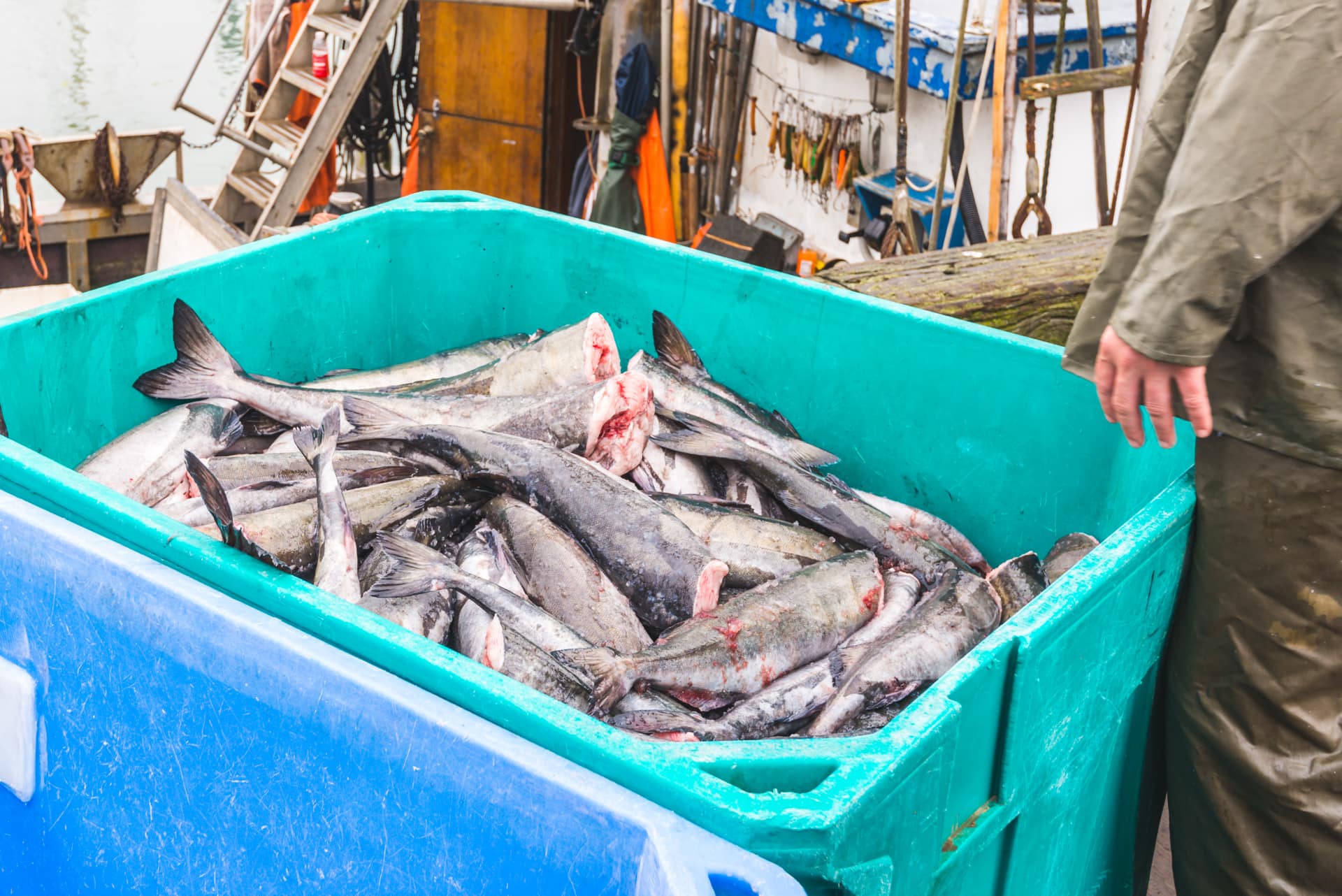
“Grow less” has certainly shown to be true for the Southern Resident Killer Whales. Calves born since the 1990s—as Chinook salmon populations started to crash— are shorter in body length than their parents or grandparents.
Although the population of Northern Resident Killer Whales has been slowly increasing over the last few decades, a recently published paper reveals that these whales are also decreasing in body length.
A reduction in Chinook populations and their smaller size is having a long-term impact on both populations, and in southern residents is attributed to miscarriages, stillborn calves, and young animals failing to thrive and survive. In addition to the loss of prime breeding age males and females, whom may be succumbing to disease and viruses due to a weakened immune system, stressed by a lack of nutrients and exposure to toxins.
Continued below...
In 2004, Southern Resident killer whales were listed under the Endangered Species Act. This directed the government agency responsible for oceans, the National Oceanographic and Atmospheric Administration (NOAA) to produce a recovery plan to determine all the threats and methods needed in order to recover the population.
However, the whales dependence on Chinook salmon, itself an endangered species, sets up a possible conflict of interest between NOAA scientists, as two separate branches of NOAA are each responsible for their species recovery plan. This despite the fact that these two species share the same environment, have coevolved, and as top predators, together shape the entire ecosystem.
Adding to the complexity, populations of seals and sea lions in the Pacific Northwest have greatly increased since the 1972 Marine Mammal Protection Act. Salmon is also an important, if small, part of their diet and this has increased pressure on the ecosystem.
Unfortunately, the combined contribution of all the salmon-eating mammals, including killer whales is not accounted for in the targets set for fishing.
A well-managed fishery should: ensure that sufficient fish are left in the ecosystem to sustain all marine populations dependent upon it; ensure survival of sufficient fish to reproduce the next generation; and then after determining this total to be “set aside”, fishing targets can be set.
Without managing the entire ecosystem in a way that recognizes that things are intrinsically interconnected, species will continue to be played against one another, with marine mammals often cast as the villain. In fact, it’s likely that these top predators would support a healthier ecosystem, compared to one without them in it. Thus, it pays to manage for the success of marine mammals in order to support an abundant fishery.
Put simply, what is good for Chinook salmon is also good for killer whales. The restoration of key habitats, including access to historic spawning grounds for Chinook salmon would result in millions more wild salmon in the oceans, supporting all of the food web, including a share for all fishers—marine mammal and human.



